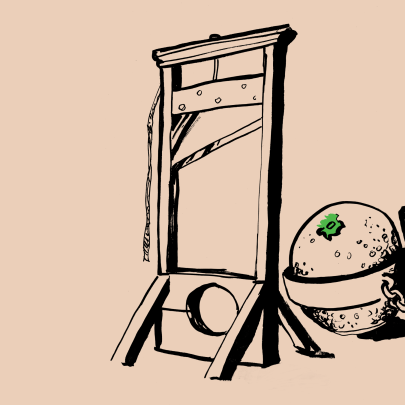Feb 19, 2016 Politics
The backlash against intensification is a very real thing this election. And it’s because the council has got us into a terrible mess.
This is an extract from Simon Wilson’s Mayor Manifesto in the March 2016 issue of Metro.
It’s so easy to complain about nimbys: the people who say they want progress for the city, as long as it’s Not In My Back Yard.
But let’s hold the smugness. We are all nimbys. We all want to preserve the things we like about where we live. Most of us probably also want the city to progress. It’s the council’s job to find a way through this, to balance individual desire with the greater good. And to do it not by ignoring one side of the equation but by allowing everyone to engage, to be heard, to be taken seriously.
Right now in Auckland, the council has not always been doing that, and the consequences for the city could be disastrous. We have a fast-brewing procedural and political crisis. By mid-year, it could become a constitutional crisis. We risk either a major backlash by voters that will sabotage the grand project of building a better Auckland, or the intervention of central government, which will have the same effect, only it could be much worse.
Auckland Council is looking incompetent and pushing itself perilously close to being unable to meet its statutory duty.
A little history: One of the biggest tasks of the council has been to produce a document that tells all of us where, when and how we can build, in every part of the city. Before the Super City, this was the role of each separate council’s district plan. The new Auckland Council produced its Unitary Plan (UP) in 2013, and by law was then required to submit it to an independent hearings panel, which would hear submissions and report back to the council, by July this year, with a final proposal. The council will then be required to formally adopt the plan, and Auckland will have new and legally binding rules for building all over the city.
The draft UP had to allow for the major population growth already occurring in Auckland and expected to continue for decades. It had to say where the extra houses could go, and inevitably this was going to impact (in good and bad ways) on people in the existing houses.
The UP went through a major consultative process, with meetings held all over the city, many of them filling local halls. Thousands of submissions were received. This resulted in changes to the draft. But a problem arose.
The UP identified goals for new housing numbers. It also proposed that “greenfields” development would not exceed 40 per cent of the overall growth in housing. And it zoned the entire city. That is, it prescribed the exact parts of the suburban and urban areas where “intensification” could occur: where sections could become smaller; where townhouses, apartments and multi-storey housing units could be built; what heights those buildings could go to, and so on.
The UP went off to the hearings panel in 2014, and if you had made a submission on the plan, you were given the chance to present that submission to the panel. So far so good; the process was a bit cumbersome, but it was also openly democratic.
But the problem was, the numbers didn’t stack up. The council anticipated a larger population than could be housed in the city the way it was proposed to be zoned. This shortfall was exacerbated by a series of decisions by the chair of the hearings panel, Judge David Kirkpatrick.
So council officials came up with amendments to the plan. They were released publicly in December last year, which is when the council voted to adopt them and send them on to the hearings panel.
Some of the changes deal with parts of the city that were not previously proposed for new zoning, and therefore were not the subject of any submissions. That meant nobody affected by them would have the chance to appear before the panel. These changes are known as “out-of-scope” amendments.
These new changes are not large in the overall scheme of things — but that’s no consolation if it’s your street that could be affected.
Since then, several things have happened.
The community halls have started filling up again with concerned citizens, especially in the leafy suburbs. Judge Kirkpatrick has raised the question of “natural justice”: regardless of the regulations, everyone should have the right to be dealt with fairly in a legal process.
The government, with the support of the council, has identified more “special housing areas” (SHAs). This is the mechanism it is using to keep making land available for fast-tracked housing development — and fast-tracking usually means less consultation. The early SHAs were largely on greenfields land, where there were few if any existing residents to object. Then came some large brownfields areas, and the latest batch includes some blocks in upmarket suburbs. The Gables pub in Herne Bay, for example, is in a new SHA where 70 apartments are planned.
Perhaps most significantly, a slim majority of city councillors (11 of the 21) have announced they want to withdraw the out-of-zone amendments.
They come from the right and the left, and their motives vary. Some of them always oppose the mayor. Some oppose intensification in any form. Some genuinely support intensification but want better consultation with affected residents. Some say they support intensification, but oppose it whenever there’s a complaint by any citizen whose vote they want in October.
The case of Cr John Walker is instructive. Walker used to be one of Mayor Brown’s most loyal supporters, and it’s his defection that has tipped Brown into a minority position.
Walker told the Herald, in a story published on February 12: “I’m on the residents’ side. I don’t want to see high-rise buildings towering over Auckland.” In case anyone was having trouble picturing what he might mean, the paper published a large “file picture” of two cute little cottages with apartment blocks, eight-10 storeys high, towering over them.
Let’s be really clear. What’s shown in that photo is not the future of suburban Auckland, in anyone’s plan. Apartment blocks like that are not suddenly going to be allowed in areas zoned for single-dwelling homes. They’re limited to the areas zoned for terraced housing and apartment blocks. Usually, that’s along arterial transport routes (such as the upper section of Great North Rd) and near the built-up parts of designated “town centres” (like Northcote and Avondale) and “metropolitan centres” (like Takapuna and New Lynn).
In fact, setting aside his rhetoric, Walker did appear to be complaining about three-storey apartments. He blamed council officials, saying he didn’t trust town planners who “present one thing and change their mind and do another”. It wasn’t clear if Walker remembered he had voted for the change.
Tragically for Auckland, the whole situation has become an inglorious mess and there’s no easy way to sort it out. Especially as one of the prevailing narratives about the council now is that it cannot be trusted, is trying to build high-rise apartments behind our backs and doesn’t care what residents think.
If the council withdraws its out-of-scope amendments, that will remove a major source of disquiet, but it will also severely limit its ability to have expert planning witnesses appear before the panel. That would be counterproductive.
If it does not withdraw the amendments, the hearings panel itself probably has the power to set them to one side. But some commentators believe there are strong legal reasons it will not do this.
Whatever happens, the scene is set for legal challenges, once the council deals with the panel’s recommendations when they are announced in July. The law specifically allows for appeals against out-of-scope decisions.
All of which will leave Auckland Council looking incompetent and push it perilously close to being unable to meet its statutory duty to adopt the Unitary Plan, in one form or another, before the end of its term in September.
Then what? Will voters urge a pox on all their houses, and vote everybody out? That would be a disaster for Auckland.
Will the government step in? That’s not good either. The Ministry for the Environment is currently preparing a National Policy Statement on Urban Development, and Minister Nick Smith could use this to force the council’s hand.
Further, if the council cannot or will not adopt the Unitary Plan, the government has the power to dissolve it and appoint commissioners to run the city. That would also be a disaster.
It’s not likely, but it is possible. The Minister of Local Government who would make that decision, by the way, is a man with proven ability in a crisis: Peseta Sam Lotu-Iiga.
Main image: Councillors Arthur Anae (left), a Len Brown loyalist, and John Walker, who has switched sides over the unitary plan process. Getty.





